Clancy Tucker's Blog, page 191
April 11, 2017
12 April 2017 - FIANCE vs. FIANCEE

FIANCE vs. FIANCEE
G'day folks,
Here are two more words that often trick people.
Much debate and change surrounds the terms fiancé and fiancée in the recent past. English speakers borrowed these gendered terms from the French in the mid-19th century, importing both the masculine (fiancé) and feminine (fiancée). This term ultimately derives from Latin, fidare literally meaning “to trust,” combined with the suffix -ance, which is used to form nouns from existing verbs.
But which form should you use when? Traditionally, the masculine form fiancé is used to describe an engaged man, while the feminine form fiancée is used to describe an engaged woman.
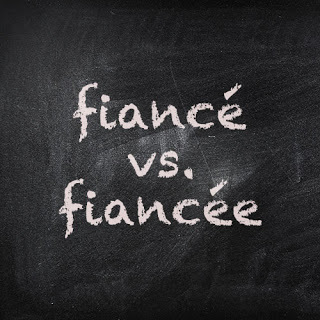
The debate over fiancé concerns the borrowed French gender differentiations (the same issue arises with the borrowed French terms blond and blonde ). Because English does not have word endings that connote gender, the need to mark the gender of engaged people (or fair-haired people) often seems irrelevant to modern English speakers, especially in light of same-sex marriages and increasing awareness of non-binary gender roles.
Even outside the realm of same-sex marriages, there seems to be an increasing use of fiancéas the unmarked form for both a man and a woman.
But as we may expect, this use may be subject to criticism, especially for those who speak a language in which masculine and feminine forms are distinguished from one another.

Clancy's comment: Mm ... I won't tell you how I remember the difference between these words.
I'm ...


Published on April 11, 2017 14:16
April 10, 2017
11 April 2017 - TOM HAYDEN - Activist
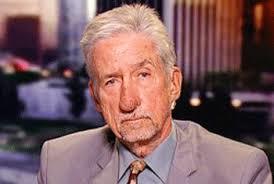
TOM HAYDEN- Activist -
G'day folks,
I've always had time for those who are prepared to stand up for what they believe in. This man is one of them. Thomas Emmet "Tom" Hayden was an American social and political activist, author and politician, who was director of the Peace and Justice Resource Center in Los Angeles County, California.
“Looking back on the '60s, it was a crisis of the elders. They led us into the insanity of Vietnam and away from the path we were on in the civil rights and student movement. The lesson is to try not to repeat that. I can't be young again, but the responsibility of the elders is to listen to and empathize with what is going on with young people.”
Tom Hayden was a vocal antiwar and civil rights activist throughout the 1960s and 1970s. He became a progressive writer who served in the California State Assembly and State Senate.
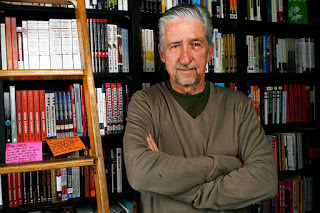
Born on December 11, 1939, in Detroit, Michigan, Tom Hayden became known as a radical anti-war and civil rights activist in the 1960s. He married actress Jane Fonda, and served a combined 18 years in the California State Assembly and State Senate. After his political career, Hayden wrote for major publications and advance his ideals for social reform as director of the Peace and Justice Resource Center. He died on October 23, 2016.
Early Years
Thomas Emmet Hayden was born to parents John and Genevieve on December 11, 1939, in Detroit, Michigan. He continued to live with his mom after his parents divorced when he was 10, although he remained close to his dad through regular fishing expeditions and trips to sporting events. Hayden began thinking about a career as a foreign correspondent while a student at Dondero High School, but became more interested in social reform after enrolling at the University of Michigan.
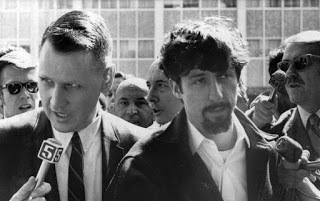
Social Activist and Political Career A co-founder of Students for a Democratic Society (SDS) in 1961, Hayden also joined the Freedom Riders in the South after authorities refused to enforce desegregation of pubic buses. He was jailed in Albany, Georgia, for attempting to desegregate a railway station. While incarcerated, he began drafting the famed Port Huron Statement, which introduced the concept of "participatory democracy" to a wider audience. Hayden later became president of SDS and helped form the Economic Research and Action Project to spur civil rights progress.
During the mid-1960s, Hayden worked with inner-city New Jersey residents as part of the Newark Community Union Project and began traveling to Hanoi, Vietnam. He was arrested for protesting at the 1968 Democratic Convention in Chicago, becoming one of the "Chicago Seven" defendants who were convicted for conspiracy to incite violence but later had their convictions overturned.
Wed briefly to fellow activist Sandra "Casey" Cason in his early 20s, Hayden married actress-turned-activist Jane Fondain 1973. That same year, the couple had a son together, actor Troy Garity (born Troi O’Donovan Garity Hayden). In addition to producing such anti-war movies as Introduction to the Enemy, the couple sought to win over political converts by giving speeches throughout the country, and transformed their Santa Barbara ranch into an egalitarian children's camp.

“I didn’t want to report on the world; I wanted to change it.” - Tom Hayden
Following an unsuccessful bid for the U.S. Senate in 1976, Hayden formed the Campaign for Economic Democracy and became chairman of the California SolarCal Council. He ran for public office again in 1982, and served in the California State Assembly for 10 years.
Hayden and Fonda divorced in 1990. He married Canadian actress Barbara Williams shortly after being voted into the California State Senate in 1992. Despite helping to pass more than 100 measures during his time in office, tackling issues ranging from small-business tax relief to the reduction of gang and domestic violence to the welfare of shelter animals, his political career stalled. Hayden fell short in his attempts to become governor of California in 1994 and mayor of Los Angeles in 1997, and failed to secure a spot on the Los Angeles City Council in 2001 after leaving the State Senate.
Hayden and Williams adopted a son, Liam, in 2000.
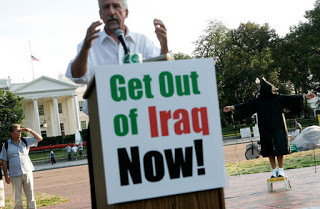
Later Years & Death Having already published several books, including his 1988 autobiography, Reunion: A Memoir, Hayden focused more on writing in the new millennium with regular contributions to such publications as The New York Times, The Huffington Post and The Nation. He also became the director of the Peace and Justice Resource Center in Culver City, California, through which he continued to share liberal ideas, support social and environmental and animal welfare causes, and speak out against wars for the remainder of his life. In 2015, he published Listen, Yankee!: Why Cuba Matters.
After a lengthy illness, Hayden died on October 23, 2016 in Santa Monica, California at the age of 76.

Clancy's comment: May he rest in peace.
I'm ...


Published on April 10, 2017 14:49
April 9, 2017
10 April 2017 - TOP QUOTES WORTH READING

TOP QUOTES WORTH READING
G'day folks,
Welcome to some great quotes.


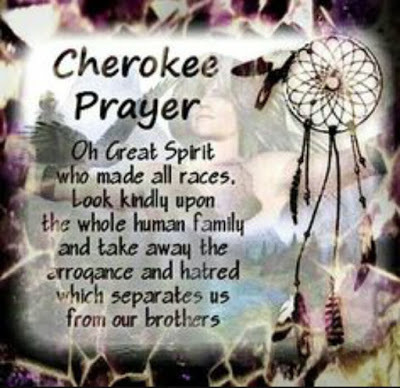
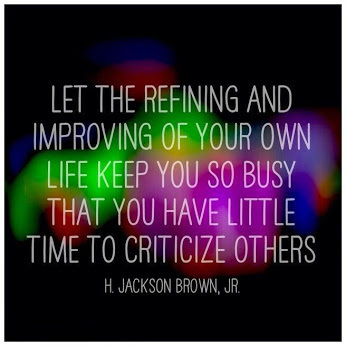







[image error]


[image error] And, here are some great pearlers from a very good friend's mother-in-law.
"SIX LITTLE STORIES"Well worth the 30 seconds to read! {1}
Once all villagers decided to pray for rain.
On the day of prayer all the people gathered,
but only one boy came with an umbrella.
That's FAITH.
{2}
When you throw babies in the air,
they laugh because they know you will catch them.
That's TRUST.
{3}
Every night we go to bed
without any assurance of being alive the next morning,
but still we set the alarms to wake up.
That's HOPE.
{4}
We plan big things for tomorrow
in spite of zero knowledge of the future.
That's CONFIDENCE.
{5}
We see the world suffering,
but still we get married and have children.
That's LOVE.
{6}
On an old man's shirt was written a sentence
'I am not 80 years old;
I am sweet 16 with 64 years of experience.'
That's ATTITUDE.
Have a happy day and live your life like the six stories.
When I was a child, I thought nap time was punishment. Now it's like a mini-vacation.
"GOOD FRIENDS ARE THE RARE JEWELS OF LIFE ... DIFFICULT TO FIND AND IMPOSSIBLE TO REPLACE!"

Clancy's comment: Mm ... Life's lessons, eh?
I'm ...


Published on April 09, 2017 15:03
April 8, 2017
9 April 2017 - THE AARDVARK

THE AARDVARK
G'day folks,
Welcome to some facts about this odd-looking creature.



The name Aardvark comes from South Africa’s Afrikaans language and means ‘earth pig’ or ‘ground pig’. Aardvarks are also known as ‘antbears’, ‘anteaters’, ‘Cape anteater’ and ‘earth hogs’.They are nocturnal. After sunset, they leave their cool burrows and forage over many km in grasslands and forests for their favorite food, termites, swinging their long nose from side to side to pick up the termites’ scent.Aardvarks use their powerful feet and claws, which resemble spades, for fast digging of underground burrows and digging up large earthen termite mounds to feast on the insects within. Their tough thick skin protects them from bites, whilst their wormlike tongue can be up to 30.5 cm long and is sticky, meaning they can trap up to 50,000 termites or ants in one night!An unusual but helpful ability allows Aardvarks to seal their nostrils, keeping dust and insects from invading their snouts.An aardvark’s keen hearing warns it of predators such as lions, leopards, hunting dogs, hyenas, and pythons. If they need to escape, they can dig fast or run in zigzags. It if all else fails, they will strike with their claws, tail and shoulders, sometimes flipping onto their backs to lash out with all fours. If attacked in the tunnel, they seal the tunnel off behind or turn around and attack with their claws.Main burrows, which are used for breeding, can be deep and extensive, have several entrances and can be as long as 13 meters. Solitary animals, aardvarks change their home borrow layout regularly, and from time to time move on and make a new one. The old burrows are then inhabited by smaller animals like the African Wild Dog.The aardvark is admired in African folklore because of its diligent search for food and its lack of fear of soldier ants.

Clancy's comment: Not a pretty creature, eh?I'm ...


Published on April 08, 2017 16:03
April 7, 2017
8 April 2017 - LARRY PAYNE - Guest Author
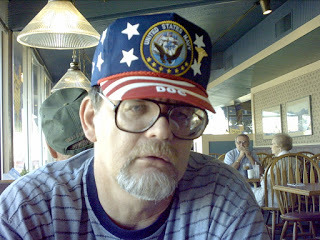
LARRY PAYNE- Guest Author -
G'day folks,
I'm pleased to introduce a fine author from the USA.
Welcome, Larry ...
1. WHEN AND HOW DID YOU BECOME A WRITER?
I’ve always been an avid reader and would dabble with writing stories. The very first thing I ever wrote was a story about my hometown using song titles and lyrics. I didn’t really get serious about writing until about 12 years ago when one of my relatives read one of my short stories and told me, “Dude, you should think about getting this published.” To which my response was, “Yeah, Right!” After I thought more about it, it started to intrigue me so I joined a writer’s website called Gather. And so it began!
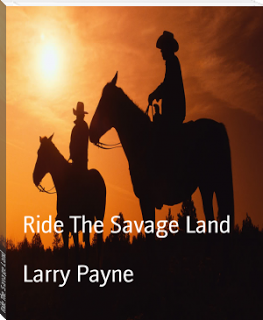
2. WHAT TYPE OF PREPARATION DO YOU DO FOR A MANUSCRIPT? DO YOU PLAN EVERYTHING FIRST OR JUST SHOOT FROM THE HIP?
I’m a pantser, not a plotter. I tried used an outline one time and by the middle of the second chapter the outline was in the trash! When I prepare a new story I have a protagonist and an antagonist and I know how I want to start it and how I want to end it. How I get from point A to point B is anybody’s guess. The story surprises me sometimes. I’ve had stories change directions four or five times before it was finished. You ever hear of characters taking over the direction of a story? Believe it! It happens!
3. WHAT IS THE HARDEST THING ABOUT BEING A WRITER?
The wait after a submission never gets any easier no matter how many times I do it! Wondering if they’re going to believe in your work like you do!
4. WHAT IS YOUR GREATEST WRITING ACHIEVEMENT?
Getting that first book published will always be my greatest writing achievement!
5. WHAT ARE YOU WORKING ON AT THE MOMENT?
The publisher of my westerns closed its doors on January 1st, so I’m currently in the 3 Rs mode, Revise, Re-edit and Resubmit, on the two books they had published.

6. WHAT INSPIRES YOU?
Success and Acceptance. One good review or one piece of good feedback and knowing that one person enjoyed what I wrote is all the inspiration I need!
7. WHAT GENRE DO YOU WRITE?
Traditional Western Fiction is my passion, but I do dabble a bit in Crime Fiction and Science Fiction
8. DO YOU HAVE ANY TIPS FOR NEW WRITERS?
Write, Write and then Write some more! Never give up and don’t let negative criticism get the best of you! Remember if one person enjoys what you write, then it’s all worth it! Keep On Writing!!
9. DO YOU SUFFER FROM WRITER’S BLOCK?
Yes, that’s why I always have 3 Works in Progress at all times. If I get hung up on my primary project, I always switch and usually to one of a different genre for a day or two!
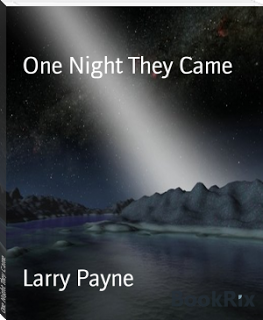
10. DO YOU HAVE A PREFERRED WRITING SCHEDULE?
I always seem to work better when the sun is up, although I have been known to work into the wee hours if the words are flowing!
11. DO YOU HAVE A FAVOURITE WRITING PLACE?
I have my own favorite little corner of the living room!
12. WHO IS YOUR FAVOURITE AUTHOR AND WHY?
Louis L’Amour…He’s the reason I’m writing westerns!
[image error]
13. WHAT’S THE GREATEST COMPLIMENT YOU EVER RECEIVED FROM A READER?
“You’re the only one who could make me read a western and enjoy it!” Came from a co-worker.
14. WRITERS ARE SOMETIMES INFLUENCED BY THINGS THAT HAPPEN IN THEIR OWN LIVES. ARE YOU?
My Father was a fanatic of western movies and books and I owe any amount of success I have in that genre to him! Thanks, Pop!
15. OTHER THAN WRITING, WHAT ELSE DO YOU LOVE?
Fishing! Nothing beats sitting on the bank of a river enjoying a summer day and catching a few fish!
16. WHAT ARE YOUR PLANS FOR THE FUTURE?
Keep Writing!
17. DID YOU EVER THINK OF QUITTING?
Never, I’m enjoying myself too much!
18. WHAT WAS YOUR FAVOURITE MANUSCRIPT TO WRITE? WHY?
Ride The Savage Land because it was the first western!
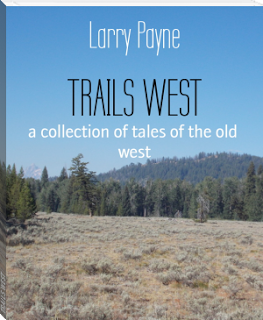
19. HOW WOULD YOU DEFINE ‘SUCCESS’ AS A WRITER.
Acceptance
20. WHAT’S YOUR ULTIMATE DREAM?
Having one of my books or short stories made into a movie!!
21. ARE YOUR BOOKS SELF-PUBLISHED?
Yes, as E-books.
22. ANYTHING YOU WOULD LIKE TO ADD?
I would like to thank you, Clancy, for sharing your readers with me. I totally enjoyed it!

AMAZON
BLOG
WEBSITE

Clancy's comment: Thank you, Larry. I know many Aussie libraries are always frantic for good westerns.
I'm ...


Published on April 07, 2017 14:29
April 6, 2017
7 April 2017 - RUNNING REPAIRS
[image error]
RUNNING REPAIRS
G'day folks,
Here are some more samples of quick fixes to automobiles. Some people are so innovative and inventive.













Clancy's comment: Mm ... One can only imagine what their house is like.
I'm ...

[image error]
RUNNING REPAIRS
G'day folks,
Here are some more samples of quick fixes to automobiles. Some people are so innovative and inventive.













Clancy's comment: Mm ... One can only imagine what their house is like.
I'm ...

[image error]
Published on April 06, 2017 13:51
April 5, 2017
6 April 2017 - WAS THERE A ‘RED TELEPHONE’ HOTLINE?

WAS THERE A ‘RED TELEPHONE’ HOTLINE?
G'day folks,
During the height of the Cold War, the United States and the Soviet Union established a direct communications link to allow their leaders to contact one another in the event of a nuclear crisis or other emergency. This Washington-Moscow hotline has since featured in countless novels and films such as 1964’s “Dr. Strangelove,” but contrary to its depictions in pop culture, it never took the form of a red telephone. In fact, it never involved phone calls at all.
The Washington-Moscow hotline was first proposed in the 1950s, but the idea didn’t gain traction until 1962’s Cuban Missile Crisis, when the Americans and Soviets found that their diplomatic messages often took several hours to reach one another. Fearing that any further mishaps might trigger an accidental nuclear war, the two superpowers met in Geneva the following year and signed a “Memorandum of Understanding Regarding the Establishment of a Direct Communications Line.”
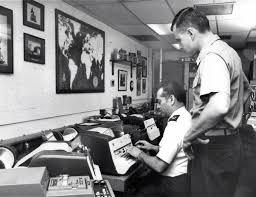
On August 30, 1963, the new system went live. Rather than a telephone link, which presented the possibility of miscommunications, the hotline consisted of teletype machines that allowed the two countries to send written messages to one another via transatlantic cable. The Soviet system was located in the Kremlin, but the American version was always housed in the Pentagon, not the White House. Satellite links were later added to the hotline during the Nixon administration, and in 1986, it was upgraded to include high-speed fax capability. The most recent overhaul came in 2008, when the system switched to email.

While there is no evidence that the hotline was ever used to avert a nuclear disaster, it often played a key role in U.S.-Soviet relations. In 1967, Lyndon B. Johnson became the first president to use the system when he negotiated with Soviet leader Alexei Kosygin during the Six Day War, a brief conflict between Israel and several Arab states. Richard Nixon later used it for similar purposes during 1971’s Indo-Pakistani War and 1973’s Yom Kippur War, and Jimmy Carter famously hopped on the hotline to object to the Soviet invasion of Afghanistan in 1979. The hotline’s last crisis uses came during the Reagan administration and the dying days of the Cold War, but it still exists to this day. To ensure that the system will function in the event of an emergency, Russian and American technicians continue to send test messages to one another once every hour.
 Clancy's comment: We can only hope common sense prevails at any given time.
Clancy's comment: We can only hope common sense prevails at any given time.I'm ...


Published on April 05, 2017 14:26
April 3, 2017
5 April 2017 - 'FLYING THROUGH CLOUDS' – Blog Tour – MICHELLE MORGAN
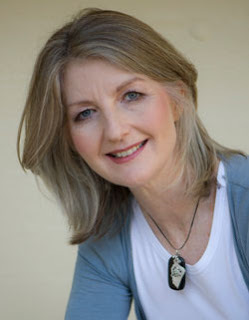
'FLYING THROUGH CLOUDS' Michelle Morgan - Blog Tour -
G'day folks,
Today, I'm taking part in a blog tour for Australian author, Michelle Morgan, who has just released her latest book, Flying Through Clouds.
Welcome Michelle ...
I was inspired to write Flying through Clouds by two historical events – the opening of the Sydney Harbour Bridge in March 1932, and the landing and take-off of Southern Cross by Sir Charles Kingsford Smith on Seven Mile Beach in January 1933. Several relatives of mine were at the opening of the Bridge and one had an official invitation. I was amazed to discover that people started climbing the bridge before it had even opened, and some of those daredevils kept a flag from the top of the arch as a souvenir. When I discovered that Sir Charles Kingsford Smith (aka Smithy) led the flypast in Southern Cross at the opening of the Bridge I was hooked.
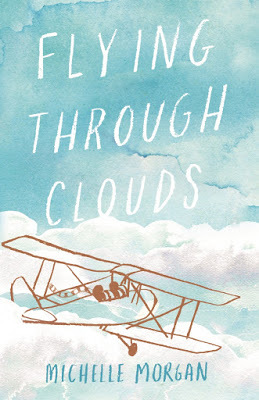
In January 2013, I wandered into the Gerringong Historical Society Museum on the South Coast of New South Wales to see their special exhibition. It was 8o years since Smithy landed Southern Cross on nearby Seven Mile Beach at Gerroa, before taking off again early the following morning, 11 January 1933, on the first commercial flight to New Zealand. I'd been toying with the idea of somehow including this amazing historical event into the new novel I ‘d begun writing. As I wandered around the exhibition, inspecting each old photo and artefact, reading every newspaper and magazine, I became more and more excited. A couple of hours later, I walked out of the museum and headed straight to Seven Mile Beach.

After parking my car on the side of the road, I headed along one of the tracks to the beach. I walked slowly, taking in every sight, smell and sound in the surrounding bush. I ran over the sand dunes to the beach, just as I'd imagined my main character would. I was channeling the teenage boy deep inside who I could picture there on the beach as Southern Cross was landing and taking off again in 1933. That was the inspiration I needed to develop an important part of my main character's story. Over the following months, I finished the first draft of Flying through Clouds . It has taken me nearly four years to edit and reshape that raw manuscript into a novel that was ready to be published.
I am sincerely grateful to pioneering aviators like Sir Charles Kingsford Smith who flew such basic planes with canvas bodies and timber wings across oceans and continents. If it wasn't for their courage, tenacity and adventurous spirit, the airline industry wouldn't have developed at the rate it did. Many of the early aviators lost their lives, including Sir Charles Kingsford Smith, who disappeared in his plane, Lady Southern Cross, off the coast of Burma in 1935.
I hope you enjoy Flying through Clouds !
AUTHOR: Michelle MorganTITLE: Flying through CloudsISBN: 978-0-9953865-0-1AGES: 12+RRP: $18.99 Pbk
Available now at bookshops, educational and library suppliers, and can be ordered on Michelle’s website: www.michellejmorgan.com.au

Check out Sally Odgers’ blog tomorrow at http://promotemeplease.blogspot.com.au/ for Day 4 of the Flying through Clouds Blog tour.

WEBSITE

Clancy's comment: Well done, Michelle. I hope your book sells well.
I'm ...


Published on April 03, 2017 23:29
4 April 2017 - THE CULTURAL REVOLUTION

THE CULTURAL REVOLUTION
G'day folks,
Welcome to some background on a very important time in history.
Following the failure of Chinese Communist Party Chairman Mao Zedong’s Great Leap Forward—a disastrous attempt to accelerate the Chinese economy that left as many as 45 million dead from famine between 1958 and 1962—the founder of the People’s Republic of China sought to reassert his authority, eliminate his political enemies and revive the country’s revolutionary fervor. On May 16, 1966, Mao launched the Great Proletarian Cultural Revolution to purge the country of “representatives of the bourgeoisie who have sneaked into the Party, the government, the army and various spheres of culture” and destroy the “Four Olds”—old ideas, old customs, old culture and old habits.

Thousands of party leaders, including Chinese President Liu Shaoqi, were jailed for “crimes against the state.” Millions of young radicals who formed the paramilitary Red Guards shut down schools, destroyed religious and cultural relics and killed intellectuals and party elites believed to be anti-revolutionaries.
Mao’s wife, Jiang Qing, led the effort to purify the arts by banning music, literature, film and theater, such as Shakespeare, too closely tied to the West. A cult of personality grew around Mao as millions of copies of the “Little Red Book” filled with his thoughts were forced to be read by those in need of “re-education.” When cities descended into anarchy as competing Red Guards factions began to battle each other, the People’s Liberation Army disarmed the student groups and banished them to work on communes in the countryside.
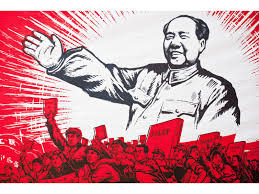
The Cultural Revolution waned in the years before Mao’s death on September 9, 1976, and came to a close weeks later with the arrest of Jiang and three of her collaborators, known as the Gang of Four, who were subsequently convicted of “counter-revolutionary crimes.” The Cultural Revolution crippled the Chinese economy and resulted in the deaths of approximately 1.5 million people and the banishment of approximately 20 million others, including China’s current president, Xi Jinping.
The Chinese Communist Party condemned the Cultural Revolution in 1981, but laid most of the blame on the Gang of Four. Public discussion of the Cultural Revolution remains prohibited in China today, in part to protect Mao’s legacy.

Clancy's comment: Interesting when we look back in history. Most, if not all those who took drastic actions to further their ideology were males ... Hitler, Idi Amin, Robert Mugabe, Pol Pot etc. Such sad outcomes.
I'm ....


Published on April 03, 2017 14:50
April 2, 2017
3 April 2017 - GRAY OR GREY?

GRAY OR GREY?
G'day folks,
Google and Vocativ recently paired up to investigate which words people have trouble spelling. They released a list of the most problematic terms by state based on search data, and the word grey appeared a staggering twelve times. So is greyincorrect?
Grey and gray are both accepted in the English language. They refer to a color of a neutral tone between black and white, and can also be used metaphorically to convey gloom and dullness. However, gray is the more popular spelling in the US, while grey reigns supreme in the UK. For centuries, the one letter difference between gray and grey has left people wondering if the two have different meanings.

Both spellings evolved from the Old English term grǣg and have retained their primary definition as a color, but many people have sought to assign gray and greyto slightly different shades. For instance, in his work Chromatography; or, a Treatise on Colours and Pigments, and of their Powers in Paintingpublished in 1835, the chemist George Field wrote that gray “denotes a class of cool cinereous colours in which blue predominates,” while Field reserves grey to describe a more neutral shade. However, such nuanced distinctions are not observed in popular usage today.
EL James’s best-selling novel Fifty Shades of Grey, along with the blockbuster film of the same name released earlier this year, may have contributed to increased uncertainty about how to spell the term in recent years.

Rest assured that when it comes to the tones between black and white, both grey and grayare acceptable spellings in the English language. If you do find yourself trying to remember which side of the pond uses which spelling more often, keep in mind this mnemonic trick: England begins with an e, while America begins with an a.

Clancy's comment: Mm ... Some of these tricky words can make your hair turn gray, grey ... Or even silver. All jokes aside, I will stick to real English, not what I call Bill Gates English.
I'm ...


Published on April 02, 2017 14:39



